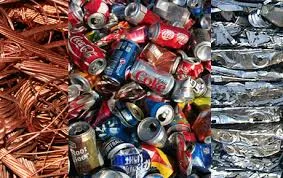Eddy current separators have revolutionized the way industries approach metal separation and recycling. By using the principle of electromagnetic induction, these separators efficiently isolate non-ferrous metals from waste streams, offering a significant increase in recovery rates. This technology not only boosts the purity of recyclables but also enhances overall operational efficiency—a striking development for recycling centers and manufacturing units that aim to optimize material recovery.

One major advantage of the eddy current separator lies in its ability to process large volumes of waste material quickly and accurately. Designed with efficiency in mind, these machines are capable of continuous operation, maximizing throughput and reducing labor costs. Industries such as automobile recycling, e-waste processing, and municipal waste facilities have greatly benefited from this level of performance, finding that they can increase their recovery rates by over 25% compared to traditional methods.
The innovative design of an eddy current separator involves the use of a high-speed magnetic rotor that induces eddy currents in non-ferrous metals such as aluminum and copper. These induced currents create opposing magnetic fields, which propel the metals away from the conveyor belt. This intelligent sorting method ensures a valuable recovery of metals that would otherwise go unnoticed in mixed material streams.

In terms of expertise, engineers have fine-tuned eddy current separators to handle a diverse array of materials effectively. Adjustable magnetic strength, varying rotor speeds, and customizable settings allow for precision targeting of specific metal types and sizes. This adaptability means that industries can tailor the separator to their particular needs, whether handling shredded electronics, mixed metal plastics, or even lightweight metal packaging.
Authoritativeness in the field of eddy current separators comes from extensive research and real-world application. Manufacturers of these machines have invested heavily in R&D to optimize their efficiency and efficacy. They work closely with industry leaders to refine designs, resulting in machinery that can withstand the harshest industrial environments while maintaining top-level performance. The latest models even incorporate AI technology to improve sorting accuracy and reduce energy consumption, highlighting a commitment to sustainability and innovation.
eddy current separator
Trustworthiness in eddy current separators is demonstrated through their solid engineering and proven track record in various industrial settings. Case studies and testimonials abound, showcasing real-world successes and quantifiable improvements in waste processing. For instance, a leading recycling facility reported a 30% increase in metal recovery and a reduction in waste disposal costs after implementing these separators. Such results underline the reliability and cost-effectiveness of the technology.
Safety and maintenance are other crucial aspects where eddy current separators excel. Designed with the safety of operators in mind, modern machines come equipped with advanced safety features such as emergency stop functions, easy-access maintenance parts, and clear operational guidelines. Regular maintenance is straightforward, with components designed for easy access and replacement, ensuring minimal downtime and extended longevity. This user-centric approach underscores the manufacturer's commitment to providing safe, durable, and user-friendly solutions.
Moreover, eddy current separators contribute significantly to environmental conservation by facilitating the recycling of non-renewable resources. As global concerns over resource depletion and environmental degradation grow, these separators play a crucial role in the circular economy. They allow for the recovery of metals without the need for additional mining, reducing energy consumption and minimizing ecological impact. By investing in this technology, industries not only boost their bottom lines but also contribute to more sustainable practices.
In summary, eddy current separators epitomize the fusion of innovation, engineering proficiency, and environmental stewardship. Their ability to efficiently and effectively sort non-ferrous metals is a testament to the advancements in modern technology. As industries continue to seek methods for improving their recycling processes, the demand for such reliable and effective separators will undoubtedly grow. Embracing this technology signifies a strategic investment in both financial profitability and environmental responsibility, ensuring businesses remain competitive in an ever-evolving marketplace.


